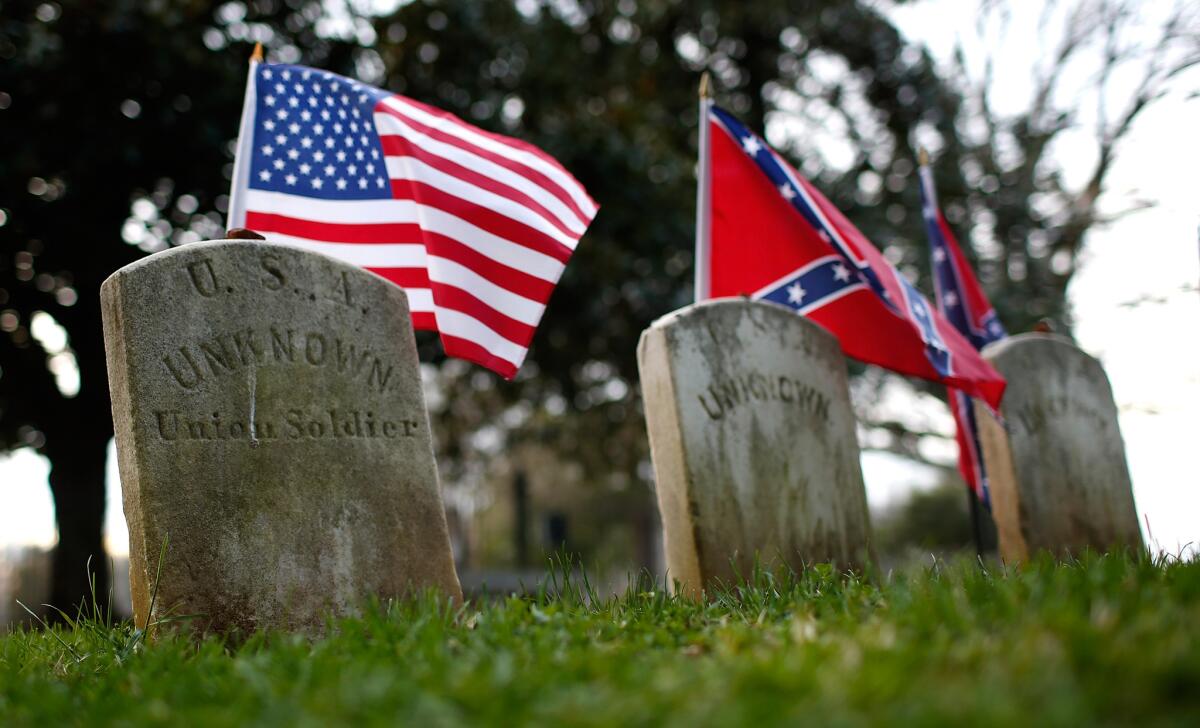Editorial: 150 years later, Civil War’s lessons are not all learned

- Share via
At least 620,000 American soldiers died during the four years of the Civil War, succumbing to bullets, illness and the elements in a fight not against an external threat but over the nation’s soul. By far the deadliest conflict fought on U.S. soil, the war came to a symbolic end 150 years ago Thursday with Confederate Gen. Robert E. Lee’s surrender of the Army of Northern Virginia at Appomattox Court House. (The war sputtered on for a few more months as recalcitrant Southern units slowly gave up.)
The nation still bears scars from those horrendous days, in which more American soldiers were killed than in World Wars I and II combined. There were many reasons for the war, including the Southern states’ belief that they could leave the Union unilaterally — a notion incoming President Abraham Lincoln rejected. But the central issue was slavery, which drove the Southern economy (and enriched more than a few Northerners in the financing and shipping worlds). Although the Union victory ended the “peculiar institution” that had 4 million people in chains at the start of the war, true racial equality remains elusive to this day.
But the nation has changed in many ways. The 13th, 14th and 15th “Reconstruction Amendments” collectively ended slavery, guaranteed equal protection under the law and allowed all men to vote regardless of race or former slave status. One of the subtler, but nevertheless important, changes had to do with the nation’s perception of itself. As historian James McPherson has pointed out, before the Civil War the United States was referred to in the plural — “the United States are a republic.” But after the war, the United States became singular — the United States is — acknowledging that the nation was now more than the sum of its parts.
It is good, and right, to look at the narrative arc of our nation’s history to give some context to our current divides. Although today’s controversies are far less threatening to the national fabric than was slavery, we are living through an era of stark and coarse political dialogue weighted by race, concepts of the proper role and size of government, economic disparity and, perniciously, a resurgence of efforts to disenfranchise non-white voters.
That brings to mind part of Lincoln’s final public address, two days after Lee surrendered, as the president tried to focus the nation’s attention forward, toward reconstruction: “Unlike a case of a war between independent nations, there is no authorized organ for us to treat with. No one man has authority to give up the rebellion for any other man. We simply must begin with, and mould from, disorganized and discordant elements.” A century and a half later, we’re still molding.
Follow the Opinion section on Twitter @latimesopinion and Facebook
More to Read
Sign up for Essential California
The most important California stories and recommendations in your inbox every morning.
You may occasionally receive promotional content from the Los Angeles Times.










